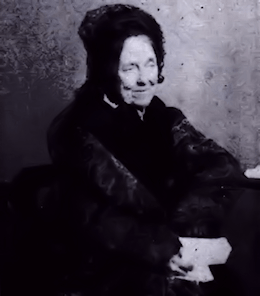Textus Receptus Bibles
Julia E. Smith Translation 1876
| 7:1 | How beautiful were thy steps with shoes, O daughter of a noble! the circuits of thy thighs a necklace, the work of the hands of an artist. |
| 7:2 | Thy navel a bowl of roundness, it will not want mixed wine; thy belly a heap of wheat enclosed with lilies. |
| 7:3 | Thy two breasts as two fawns, twins of the roe-deer. |
| 7:4 | Thy neck as a tower of ivory; thine eyes pools in Heshbon, by the gate of the daughter of many: thy nose as the tower of Lebanon viewing the face of Damascus. |
| 7:5 | Thy head upon thee as Carmel, and the locks of thy head as purple; the King being bound in curls. |
| 7:6 | How beautiful and how pleasant thou wert, O love, in delights! |
| 7:7 | This thy height was like to a palm tree, and thy breasts to clusters. |
| 7:8 | I said, I will go up upon the palm tree, I will hold fast upon its branches: and now thy breasts shall be as clusters of the vine, and the odor of thy nose as apples. |
| 7:9 | And thy palate as good wine going to my beloved for uprightness, causing the lips of the sleeping to flow softly. |
| 7:10 | I to my beloved, and upon me his desire. |
| 7:11 | Come, my beloved, we will go forth to the field; we will lodge in the villages. |
| 7:12 | We will rise early to the vineyards; we will see if the vine was fruitful, the vine blossoms opened, the pomegranates blossomed: there will I give my beloved to thee. |
| 7:13 | The mandrakes gave an odor, and upon our entrances all precious things, new also old, my beloved, I laid up for thee. |

Julia E. Smith Translation 1876
The Julia Evelina Smith Parker Translation is considered the first complete translation of the Bible into English by a woman. The Bible was titled The Holy Bible: Containing the Old and New Testaments; Translated Literally from the Original Tongues, and was published in 1876.
Julia Smith, of Glastonbury, Connecticut had a working knowledge of Latin, Greek and Hebrew. Her father had been a Congregationalist minister before he became a lawyer. Having read the Bible in its original languages, she set about creating her own translation, which she completed in 1855, after a number of drafts. The work is a strictly literal rendering, always translating a Greek or Hebrew word with the same word wherever possible. Smith accomplished this work on her own in the span of eight years (1847 to 1855). She had sought out no help in the venture, even writing, "I do not see that anybody can know more about it than I do." Smith's insistence on complete literalness, plus an effort to translate each original word with the same English word, combined with an odd notion of Hebrew tenses (often translating the Hebrew imperfect tense with the English future) results in a translation that is mechanical and often nonsensical. However, such a translation if overly literal might be valuable to consult in checking the meaning of some individual verse. One notable feature of this translation was the prominent use of the Divine Name, Jehovah, throughout the Old Testament of this Bible version.
In 1876, at 84 years of age some 21 years after completing her work, she finally sought publication. The publication costs ($4,000) were personally funded by Julia and her sister Abby Smith. The 1,000 copies printed were offered for $2.50 each, but her household auction in 1884 sold about 50 remaining copies.
The translation fell into obscurity as it was for the most part too literal and lacked any flow. For example, Jer. 22:23 was given as follows: "Thou dwelling in Lebanon, building as nest in the cedars, how being compassionated in pangs coming to thee the pain as in her bringing forth." However, the translation was the only Contemporary English translation out of the original languages available to English readers until the publication of The British Revised Version in 1881-1894.(The New testament was published in 1881, the Old in 1884, and the Apocrypha in 1894.) This makes it an invaluable Bible for its period.